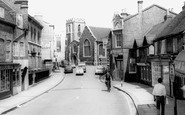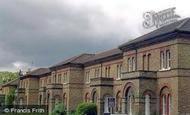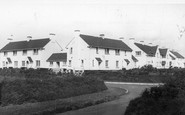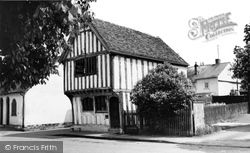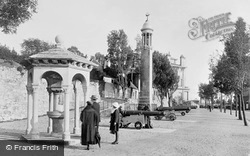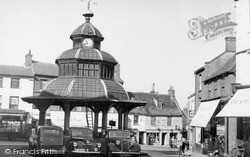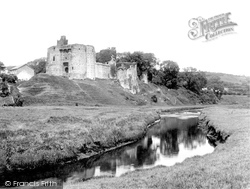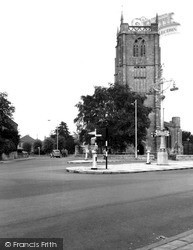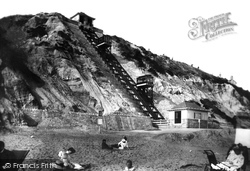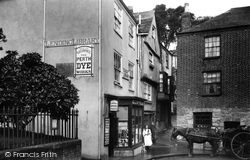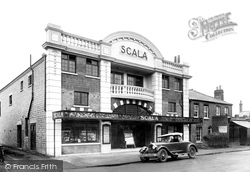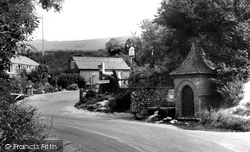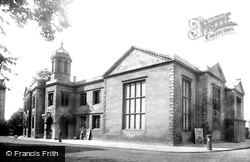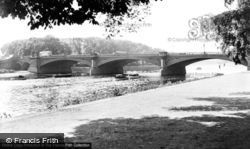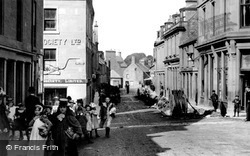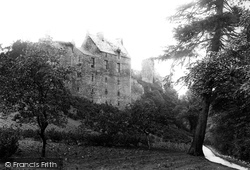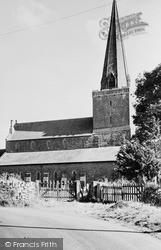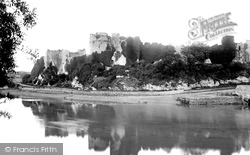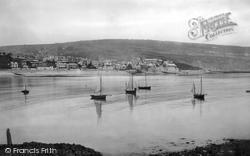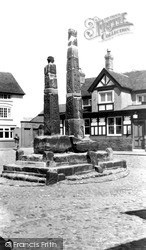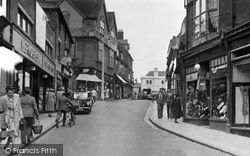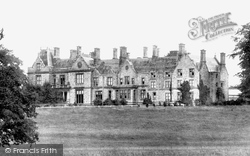Places
26 places found.
Those places high-lighted have photos. All locations may have maps, books and memories.
- Town End, Derbyshire
- Town End, Buckinghamshire
- Town's End, Somerset
- Towns End, Dorset
- Town End, Merseyside
- Town End, Cambridgeshire
- Town's End, Buckinghamshire
- West End Town, Northumberland
- Bolton Town End, Lancashire
- Kearby Town End, Yorkshire
- Town End, Cumbria (near Grange-Over-Sands)
- Town End, Cumbria (near Bowness-On-Windermere)
- Town End, Yorkshire (near Huddersfield)
- Town End, Yorkshire (near Wilberfoss)
- Town End, Cumbria (near Appleby-in-Westmorland)
- Town's End, Dorset (near Melbury Osmond)
- Town's End, Dorset (near Swanage)
- Town End, Cumbria (near Ambleside)
- Town End, Cumbria (near Lakeside)
- Town End, Cumbria (near Kirkby Lonsdale)
- Town End, Cumbria (near Ambleside)
- Town's End, Dorset (near Bere Regis)
- West-end Town, South Glamorgan
- Townend, Derbyshire
- Townend, Strathclyde (near Dumbarton)
- Townend, Staffordshire (near Stone)
Photos
26 photos found. Showing results 3,481 to 26.
Maps
195 maps found.
Books
160 books found. Showing results 4,177 to 4,200.
Memories
3,719 memories found. Showing results 1,741 to 1,750.
Heswall Magazine
I run Heswall Magazine which is circulated around Heswall and the local area. You can view all copies on our website: www.heswallmagazine.co.uk I have some interesting pictures of Heswall including some of the Coronation Day ...Read more
A memory of Heswall by
I Lived In Hillview Cresent In The Fifties...
We moved to Farrington Gurney when I was 4 or 5... Other families I remember were the Burtons, Longs, Maggs and Chivers... I remember spending Saturday afternoons at the church... When there was ...Read more
A memory of Farrington Gurney in 1955 by
A Step Back In Time
I was born in Denham village but brought to Rockingham Parade, Uxbridge when I was one year old. Windsor Street was my main walking route to the town, bus, railway station and the shops. Uxbridge was a lovely town to grow up ...Read more
A memory of Uxbridge in 1966 by
Direct Enlistment
It was the 24th May 1955 when I arrived, with a number of other lads, at Inkerman Bks to begin eighteen weeks training that would "hopefully" see us depart with the somewhat doubtful tital of Military Policemen. My memories of ...Read more
A memory of Knaphill in 1955 by
Lanfranc School
With the 50th anniversary of the tragic air crash involving my classmates in 2011 I thought I would add a few memories. I could so easily have been on that plane had it not been for the fact that I wanted to buy my first cycle. I ...Read more
A memory of Croydon in 1961 by
First Camp Site
Does anyone remember the old camp site run by Mr and Mrs Dymond? It was roughly where Woolacombe Sands is now, near the riding stables. I can recall it was a steep field (no terracing then!) and we used to walk down to the old ...Read more
A memory of Woolacombe in 1956 by
My Family In Kilkhampton.
My grandparents Tom & Minnie Croucher lived at Cross Cottage (between Stibb and Kilk), their youngest son Derek married Jette after meeting her during the war in Denmark. They lived at 21 North Close Estate for ...Read more
A memory of Kilkhampton by
More Early Days In Colindale
Life in Sheaveshill Avenue in the early to middle 1950's still seemed to me to be quite rural and as I recall we still had gas lit street lamps - or at least electric lamps using the old standards. The milk was ...Read more
A memory of Colindale in 1954 by
Weston Favell Upper School 1966 1970
I went to Weston Favell Upper School in 1966 aged 11 of which I have very fond memories. I left at the age of 15 in 1970. In that time Weston Favell was on the Eastern edge of Northampton in Booth lane, The ...Read more
A memory of Northampton by
Roundshaw
My mum found this site, and wow. I lived in Instone when I was 7 on the 9th floor with my mum, brother and sister, then we moved to Vulcan Close. We used to spend all our time over the field and on the decks, there used to be a van ...Read more
A memory of Wallington in 1970 by
Captions
5,111 captions found. Showing results 4,177 to 4,200.
Truly one of the finest small museums in Hertfordshire, Ashwell Village Museum was founded in November 1930 and is based on the collection of Albert Sheldrick and John Bray, made when they were schoolboys
Travelling aboard the 'Mayflower', the emi- grants had to put into Dartmouth and Plymouth following problems with the ship.
The town took the cross over and installed a chimney clock in 1899. The library on the square (right) boasts that it is 'the largest in East Anglia'.
It pumped sea water, which was used both in local water carts for street cleaning, and for flushing out the town's sewerage system.
The town is chiefly noteworthy for its noble old castle, the remains of which have been carefully strengthened so that the relic is the best preserved of the nine castles in Carmarthenshire.
St John's Church stands at the busy crossroads of the High Street and Station Road, which runs towards Fry's (now Cadbury's) chocolate factory at Somerdale.
The Victorian guide book writer J Burney Yeo complained that the new town had 'no esplanade or promenade' and found the burgeoning resort very dull in comparison with others.
The churchyard rails are on the left in this scene in the heart of the old town.
Before efficient transport links were opened to Ilfracombe, steamers crossed the Severn estuary from South Wales, discharging hundreds of day-trippers into the town.
The ornately designed building is a vivid reminder of the days, long before the television and video age, when every town in the country had a picture house, or 'flea pit' as they were sometimes known.
At Fulking, 16th-century cottages still lie on either side of the village street that winds its way below the South Downs.
The Town Hall, on the west side of St Paul's Square, started life as a school, a school originally founded by Sir William Harpur (a key name in Bedford's history) in 1566.
This brief tour ignores the Georgian houses of High Pavement, the castle and the famous Lace Market area to descend to the River Trent.
Westgate, dating back to the 14th century, provides access to the south-west corner of the old walled town.
This small town once played host to one of the significant events in Scotland's history: John Balliol surrendered the realm of Scotland to Edward Longshanks here on 10 July 1296.
Mary of Guise was against it, as was the Catholic Church, and Arran not only changed sides but also faiths. The English invaded. Edinburgh fell, Holyrood was burnt.
The reason for this is that at one point in its history, Trelleck was arguably the second largest town in Wales; but by 1700 the population had shrunk considerably.
The fortifications of the castle once surrounded the entire town to protect it from attack. Pembroke was also an important port and quays can still be seen under its walls.
Nestling in a combe between two rocky hills, the tower of the parish church of St Michael is clearly visible in this view of the town, taken from the Cobb, on which the Duke of Monmouth landed on 11
Despite the fact that most of our towns and villages were founded in Saxon times, few have any reminders of their Saxonhistory left other than perhaps their names.
The fascias to Boots and beyond hide a range of early timber-framed buildings.
This is a charming turn-of-the-century tableau of Salutation Square, which is the main route into the town.
Tilgate Mansion was situated about a mile south of the town on the edge of Tilgate Forest, part of the woodlands that comprise St Leonards, Tilgate and Worth Forests; they run in a swathe from Horsham
Beyond are Langmoor Gardens and the Bay Private Hotel on Marine Parade. The wooded skyline above the town extends from Rhode Barton and Thistle Hill to Penn Hill and Timber Hill.
Places (26)
Photos (26)
Memories (3719)
Books (160)
Maps (195)


